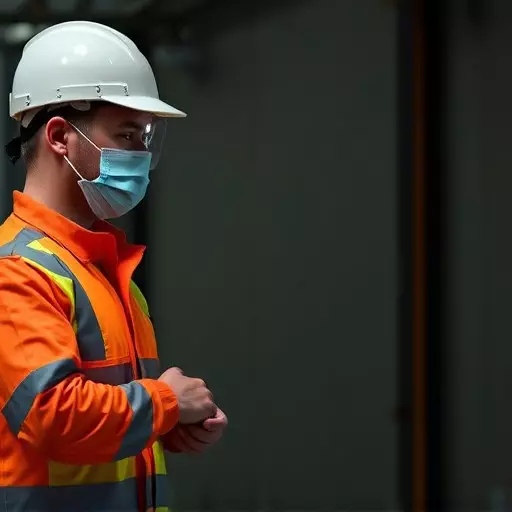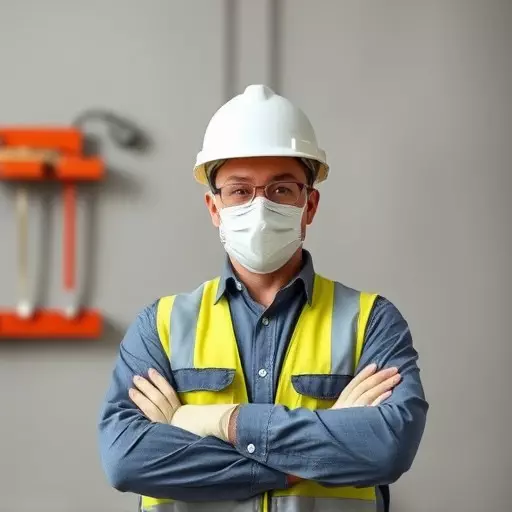High-risk industries like construction, manufacturing, and mining face significant dangers from machinery, materials, and environments. Overcoming these challenges requires a dual approach: implementing effective occupational safety lessons learned and adopting robust safety compliance strategies. Key among these is the use of personal protective equipment (PPE) best practices, including appropriate PPE provision, worker training, and consistent protocol adherence. This holistic approach reduces incidents and enhances safety by fostering a culture where safety is a shared responsibility. Regular training, risk assessments, audits, and open communication channels are vital for maintaining this robust safety program.
In high-risk industries, where accidents can have severe consequences, implementing robust safety practices is paramount. This article delves into the unique challenges faced by these sectors and offers valuable insights to enhance workplace safety. We explore essential strategies, from learning from past occupational safety incidents to developing effective compliance plans. Key topics include personal protective equipment (PPE) best practices, comprehensive worker training, regular audits, and fostering a culture of safety awareness. By adopting these measures, high-risk industries can significantly mitigate risks and ensure a safer environment.
- Understanding High-Risk Industries and Their Unique Safety Challenges
- The Importance of Occupational Safety Lessons Learned in Risk Mitigation
- Developing Effective Safety Compliance Strategies for High-Risk Sectors
- Personal Protective Equipment (PPE): Best Practices for Maximum Protection
- Implementing Comprehensive Training Programs for High-Risk Workers
- Regular Audits and Inspections: Ensuring Continuous Safety Improvement
- Fostering a Culture of Safety Awareness in High-Risk Environments
Understanding High-Risk Industries and Their Unique Safety Challenges
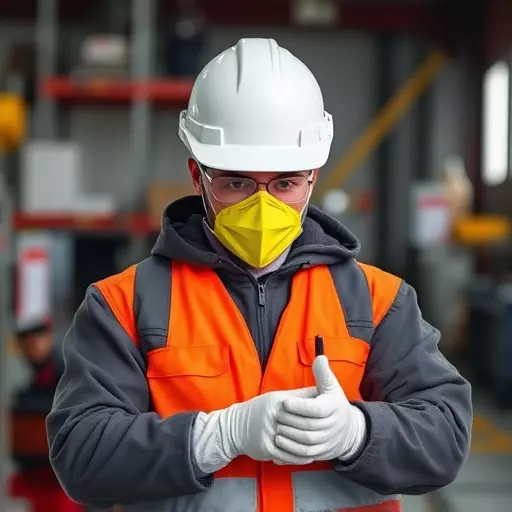
High-risk industries, such as construction, manufacturing, and mining, face distinct safety challenges due to their inherently dangerous nature. These sectors often involve heavy machinery, hazardous materials, and complex work environments. Understanding these unique risks is crucial for implementing effective occupational safety lessons learned and safety compliance strategies.
Personal protective equipment (PPE) best practices play a pivotal role in mitigating these dangers. Employers must provide appropriate PPE, ensure worker training on its use, and enforce consistent adherence to safety protocols. By combining robust safety compliance strategies with the right PPE, high-risk industries can significantly reduce incidents and create safer working conditions for their employees.
The Importance of Occupational Safety Lessons Learned in Risk Mitigation
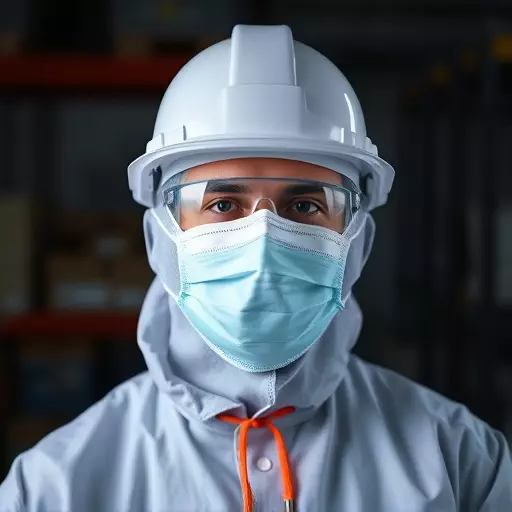
In the high-risk industry sector, one of the cornerstones of safety is learning from past experiences and implementing effective occupational safety lessons learned. By studying incidents and near misses, companies can identify vulnerabilities and implement robust safety compliance strategies. This proactive approach ensures that potential risks are mitigated before they escalate into hazardous situations.
Moreover, integrating personal protective equipment (PPE) best practices is vital within these strategies. Proper use and maintenance of PPE, such as hard hats, safety glasses, and respirators, not only safeguard workers but also serve as a visual reminder of the commitment to occupational safety at all levels of the organization. This holistic approach combines lessons learned with stringent safety protocols to foster a culture where safety is a shared responsibility, ultimately leading to a significant reduction in workplace accidents and injuries.
Developing Effective Safety Compliance Strategies for High-Risk Sectors
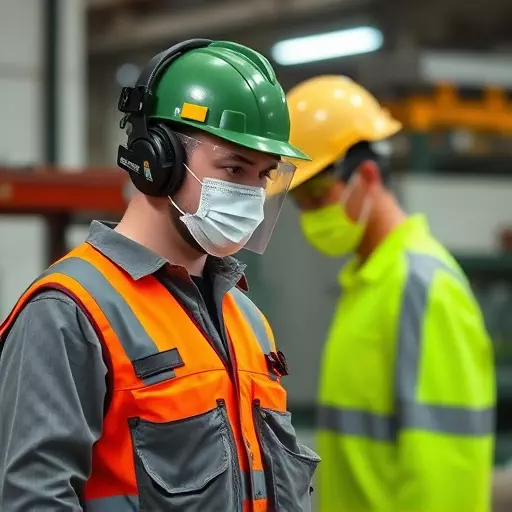
In high-risk industries, developing robust and effective safety compliance strategies is paramount to mitigate potential hazards and ensure worker well-being. These sectors, such as construction or chemical manufacturing, often face unique challenges that demand tailored approaches. A key component of any successful strategy involves integrating personal protective equipment (PPE) best practices into the fabric of daily operations. By mandating the use of appropriate PPE, such as hard hats, safety goggles, and respirators, companies can significantly reduce the risk of injuries and illnesses. Additionally, providing comprehensive training on PPE usage and conducting regular assessments to ensure compliance foster a strong culture of occupational safety.
Safety professionals can learn valuable lessons from past incidents and near-misses to continually improve these strategies. Analyzing accidents and close calls reveals critical gaps and areas for enhancement. This data-driven approach enables industry leaders to implement more effective procedures, policies, and protocols, thereby enhancing overall workplace safety. For instance, identifying common causes of injuries in construction sites may lead to the introduction of stricter safety protocols for heavy machinery operation or innovative solutions like smart sensors for fall protection.
Personal Protective Equipment (PPE): Best Practices for Maximum Protection

Personal Protective Equipment (PPE) plays a pivotal role in high-risk industries, serving as a frontline defense against potential hazards. To maximize protection, it’s essential to adopt best practices that encompass several key strategies. Firstly, conducting thorough risk assessments helps identify specific hazards and select appropriate PPE. This ensures compliance with safety standards and regulations, aligning with valuable occupational safety lessons learned from industry experts.
Additionally, providing comprehensive training to employees on PPE usage is paramount. It involves demonstrating the correct donning and doffing procedures, explaining equipment maintenance, and fostering a culture that prioritizes its consistent use. Regular inspections and replacements also extend the lifespan and effectiveness of PPE, ensuring it remains in optimal condition. By integrating these practices into safety compliance strategies, high-risk industries can significantly minimize risks, enhancing workplace security for all personnel involved.
Implementing Comprehensive Training Programs for High-Risk Workers

In the high-risk industry, where hazards are prevalent and consequences can be severe, implementing comprehensive training programs is paramount for ensuring occupational safety. These programs should encompass a wide range of topics, including hazard identification, risk assessment, and the proper use of personal protective equipment (PPE). By providing workers with thorough training, companies can equip them with the knowledge and skills needed to recognize potential dangers and take appropriate precautions. This proactive approach not only reduces the likelihood of accidents but also fosters a culture of safety awareness among employees.
Effective training goes beyond initial orientation sessions. Regular updates, refresher courses, and continuous learning opportunities are essential components of successful safety compliance strategies. Lessons learned from past incidents should be incorporated into these programs to prevent similar mistakes. Additionally, promoting open communication channels allows workers to voice concerns, share observations, and collaborate in identifying areas for improvement, further enhancing overall safety practices.
Regular Audits and Inspections: Ensuring Continuous Safety Improvement

Regular audits and inspections are vital components in any high-risk industry’s safety strategy. These assessments provide an opportunity to identify potential hazards, evaluate existing safety protocols, and ensure compliance with stringent regulatory standards. By conducting thorough audits, companies can uncover areas where improvements are needed, whether it’s updating safety procedures, implementing new technologies, or enhancing personal protective equipment (PPE) best practices. This continuous improvement approach is essential for mitigating risks and fostering a culture of occupational safety lessons learned.
Through meticulous inspections, businesses can identify non-conformities, address training gaps, and promote adherence to safety compliance strategies. By regularly reviewing operations, maintenance protocols, and employee practices, companies can stay ahead of potential accidents or incidents. These audits not only safeguard workers but also contribute to the overall efficiency and effectiveness of high-risk industry operations.
Fostering a Culture of Safety Awareness in High-Risk Environments

In high-risk industries, fostering a culture of safety awareness is paramount. It involves more than just adhering to occupational safety lessons learned and regulatory standards; it’s about embedding safety compliance strategies into every aspect of operations. This starts with leadership commitment and extends to open communication channels where workers feel comfortable reporting concerns or near misses without fear of reprisal. Regular training sessions, comprehensive risk assessments, and clear, consistent messaging reinforce a strong safety mindset.
Personal protective equipment (PPE) plays a crucial role in this culture. Best practices dictate that PPE should be thoughtfully selected based on the specific risks involved. Proper fitting, use, and maintenance of PPE are essential to ensure its effectiveness. Encouraging employees to take ownership of their safety by adhering to PPE guidelines and reporting any issues or deficiencies contributes to a safer work environment overall.

